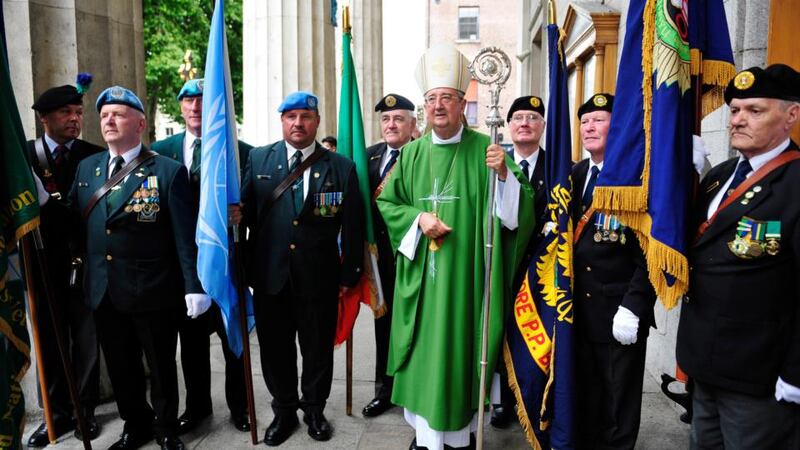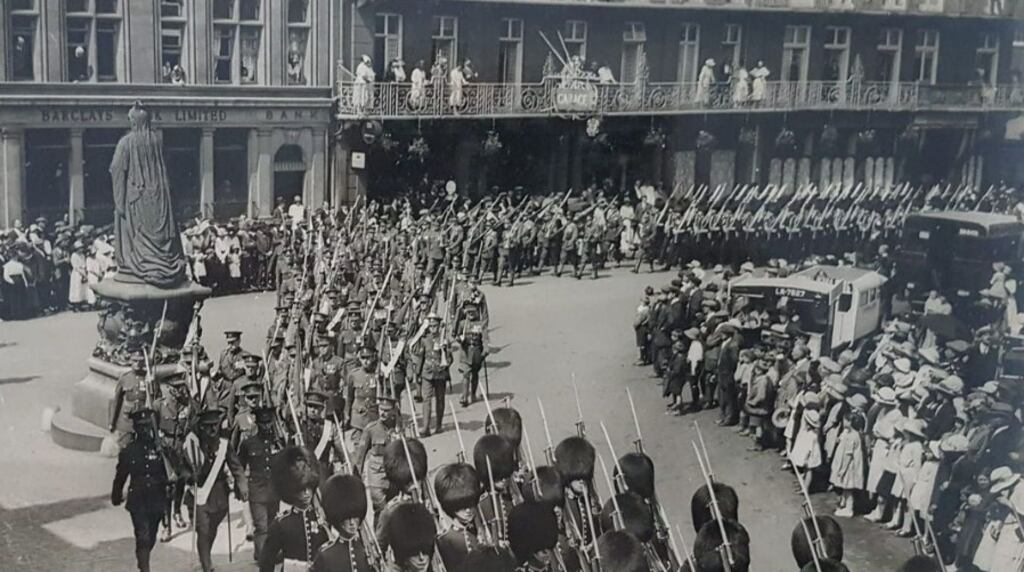A hundred years to the day after the event, a service of remembrance will take place in St Patrick’s Cathedral, Dublin, on Sunday afternoon to mark the centenary of the disbandment of six Irish regiments of the British army.
The Royal Dublin Fusiliers, the Royal Munster Fusiliers, the Leinster Regiment, the Connaught Rangers, the Royal Irish Regiment and the South Irish Horse were disbanded under the terms of the Anglo-Irish Treaty.
On June 12th, 1922, the colours of the six Irish regiments were laid up in the chapel of Windsor Castle and centuries of military tradition came to an end.
The oldest of the regiments, the Royal Irish Regiment, which had its barracks in Clonmel, had served the British army since 1684.
READ MORE
The disbanded regiments, with the exception of the South Irish Horse, all have very active regimental associations mostly made up of the relatives of those who had served. These have organised the service.
Separately, the Combined Irish Regiments Association, which represents former and current Irish regiments in the British army, is holding hold a parade in London to the Cenotaph.
The Irish Guards, which was recently the subject of some controversy following remarks made on BBC during the jubilee commemorations, survived the cull of the Irish regiments.
They were not exclusively a southern Irish based regiment and their barrack was based in London.
Despite the resistance of many in nationalist Ireland to those who served the Crown, generations of Irish men joined the Irish regiments.
Throughout the 19th century the percentage of Irish serving in the British army was greater than the Irish share of the UK population. In the 1830s, there were more Irish private soldiers and noncommissioned officers in the British army than English ones.

These regiments had a huge presence in Ireland. Towns including Tralee, Renmore, Birr, Mullingar, Boyle and Longford were known as “garrison towns”.
In 1888, 21 of the 51 towns in Munster with a population of more than 2,000 had a military barracks. The pattern was similar in the rest of the country. By comparison, as historian Dr Aoife Bhreatnach has observed, the present Irish Defence Forces have just 16 military stations for the whole State.
The British army was much more ubiquitous. “Anyone living in a country with a small standing army will struggle to imagine how pervasive was the military presence,” she states on her blog Garrison Towns.
During the first World War the casualties endured by Irish regiments were staggering. Historian Tom Burnell estimates that the dead from what is now the Republic of Ireland was more than 30,000. A large percentage of those would have served in the disbanded regiments.
On the occasion of the disbandment 100 years ago, King George V received the colours saying the event “cannot fail to strike a note of sadness in our hearts”.
“I am proud to accept this trust, but I fully realise with what grief you relinquish these dearly-prized emblems and I pledge my word that within these ancient and historic walls your colours will be treasured, honoured and protected as hallowed memorials of the glorious deeds of brave and loyal regiments.”
Five years ago, former taoiseach Bertie Ahern said the standards of the six regiments should be returned to Ireland and revealed that he had “rattled on for years” about them.
“We had almost reached the point 15 years ago when they were to be returned to their rightful place,” he said then.
“Those flags are well-respected across the water, but it would be lovely to have them back. I still think it should be followed through. If we were to follow the line of symbolism, that would be number one.”
Mr Ahern said the flags belong to Queen Elizabeth and only she can give them back to Ireland.










